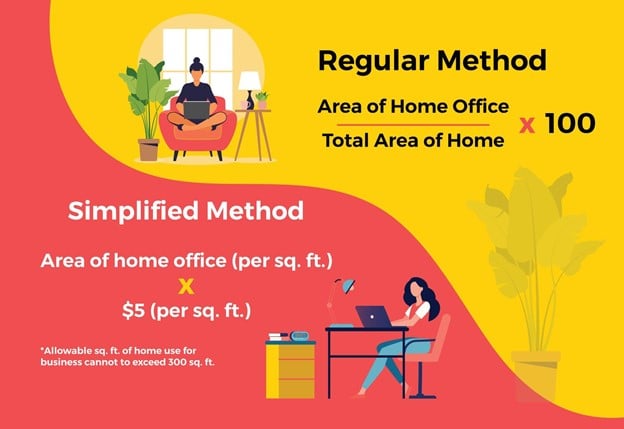A home office is one of the greatest perks of being a freelancer especially if you operate your business from home full-time. Having a home office also provides you with a significant tax deduction, if you qualify for it.
IMAGE: UNSPLASH
To be eligible for the home office deduction, you must meet one of the following requirements:
- Exclusive and regular use: You must regularly use part of your home exclusively for conducting business. For example, if you use a spare room to run your business, you can take a home office deduction for that extra room.
- Principal place of business: You must prove that you use your home as your principal place of business. If you conduct business away from your home and use your home regularly, you may qualify for a home office deduction.
It is important that you must meet the “exclusive and regular use” requirement. This means that your home office is your primary workplace and you do not have a separate office space that you rent or go to regularly.
If you have an office that is accessible to you but you choose to work from home because it is more convenient, you cannot claim the deduction.
Your home office must be either the principal location of your business or a place where you regularly meet with customers or clients. Some exceptions to this rule include daycare and storage facilities. The home office deduction Form 8829 is available to both homeowners and renters.
What You Can Deduct As A Home Office Expense
The following list comprises home-related expenses that you can write off:
- Rent: A percentage of your monthly rent is tax-deductible.
- Insurance: You can write off the cost of insurance (home/renter/property insurance) that covers the business part of your home.
- Utilities: Basic utilities like electricity, gas, water and trash removal are usually personal expenses and cannot be written off, but you can write off a portion of these costs if you have a home office.
- Home essentials: Cleaning supplies, soap, toilet paper, and other necessities are partially tax-deductible.
- Home office furniture: Any furniture that you bought for your workstation is fully tax-deductible. You don’t have to take a percentage of these expenses, since they’re used exclusively for business activities.
- Wi-Fi bill: You can claim your internet bill as a tax deduction.
- Property taxes: Just like the mortgage interest write-off, you can also deduct a portion of your property taxes.
- Telephone: Whether you have a landline or cell phone, a portion of it can be written off.
- Home repairs and maintenance: Any sort of home office repairs can be written off. However, if you are renovating the home, then you’ll get a partial write-off.
Tax filing is one of the important responsibilities freelancers have to deal with, but taking advantage of relevant deductions can help maximize your savings this year. With FlyFin you can enjoy all these deductions without the hassle of collecting all the receipts. FlyFin will track all your expenses and automatically present you with a list of deductions applicable to your home office.
Taxpayers who qualify may choose one of two methods to calculate their home office expense deduction.
- Regular method: You can take a portion of all home-related expenses. The deductions for a home office are based on the percentage of the home for conducting business. Taxpayers who use a whole room or part of a room for conducting their business must figure out the percentage of the home used for business activities to deduct indirect expenses such as rent and utilities.
- Simplified method: The IRS has set a rate of $5/square foot. The maximum size for this option is 300 square feet. The maximum deduction under this method is $1,500.
The calculation necessary to claim the regular home office deduction is somewhat complex and requires meticulous record-keeping. The simplified method, just as the name suggests, simplifies the calculation and recordkeeping requirements of the allowable deduction.
When it comes to opting for the ideal method, you need to figure out the size of your home office and the calculations you want to make. The simplified method works best for small business owners since the difference in the deduction isn’t worth the trouble of mulling over extra paperwork and record-keeping that is involved with the regular method. If your home office is small, you’ll benefit from the simplified method since the calculations are less complicated, plus, you’re likely to see a larger deduction by claiming $5 per square foot.
The simplified option is said to be easier but may result in a smaller tax break while the regular option requires more complicated calculations and recordkeeping, but can provide you with a larger deduction.
Bottom Line
If you reside in an expensive area where mortgage and rent payments are higher. Even a small home office may result in a higher deduction if your housing and utility payments are costly. A percentage of that high cost could be a valuable deduction.
The home office deduction is slightly complicated but very beneficial. Although, it majorly depends on the method you choose. If the paperwork seems too burdensome, FlyFin can help you perform the calculations and make the right decision.
It is powered by automated intelligence that scans your expenses and automatically finds deductions. When it comes to any sort of complicated deductions such as the home office, the app allows you to consult an expert team of CPAs to help you determine if you qualify for further tax deductions.
Along with that, FlyFin provides an accurate Quarterly Tax Calculator for freelancers to calculate their quarterly taxes and ensure they file more efficiently to save time, and money.
If you are interested in even more business-related articles and information from us here at Bit Rebels, then we have a lot to choose from.



COMMENTS